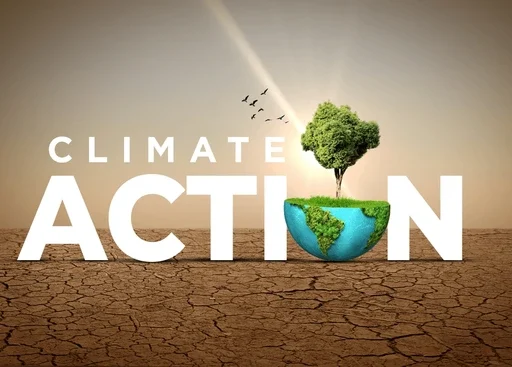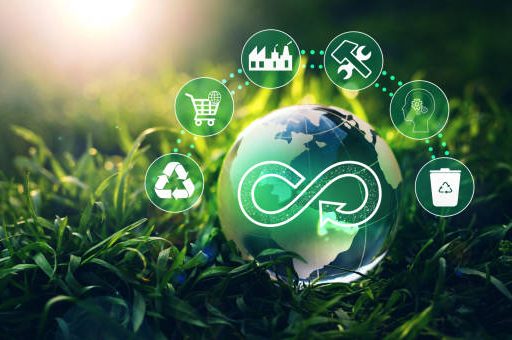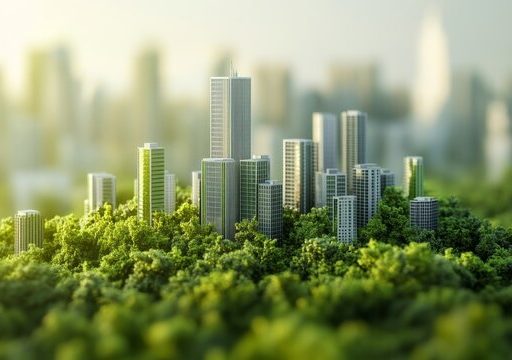Beyond conventional sustainability initiatives, The Rise of Regenerative Business represents a revolutionary change in corporate responsibility. Regenerative business seeks to improve and repair ecosystems, communities, and economies, whereas sustainability concentrates on limiting harm. This method is becoming increasingly popular as businesses realize they need more comprehensive, effective strategies that actively support the renewal of the earth in addition to preventing damage.
Regenerative companies embrace the concepts of the circular economy 2.0 and integrate activities like regenerative agriculture, in contrast to traditional models that frequently focus short-term advantages. These procedures are intended to have a beneficial effect, guaranteeing that corporate activities support social and environmental systems. The Rise of Regenerative Business is an essential development in how businesses work with the environment.
Understanding Regenerative Agriculture: A Pillar of Regenerative Business
A key component of the Rise of Regenerative Business is regenerative agriculture, which emphasizes agricultural methods that improve biodiversity, restore soil health, and trap carbon. This method differs from traditional agriculture, which frequently uses a lot of chemicals and depletes soil nutrients. Regenerative agriculture improves farming systems’ resilience and helps mitigate climate change by putting practices like cover crops, no-till farming, and rotational grazing into practice.
Regenerative agriculture has significant economic benefits. A McKinsey research suggests that implementing regenerative methods on maize and soy farms in the United States might result in an additional economic value of up to $250 billion over ten years, with potential returns of $20 to $60 per acre within the first ten years. These numbers demonstrate the economic feasibility of regenerative techniques, balancing profitability with environmental responsibility.
Embracing Circular Economy 2.0: Advancing Beyond Traditional Models
The circular economy 2.0 is a development of the classic circular economy that emphasizes the regeneration of natural systems in addition to material reuse and recycling. By encouraging actions that improve and repair the environment, this approach supports the Rise of Regenerative Business. By designing goods for lifetime, repairability, and recyclability, businesses that embrace the concepts of the circular economy 2.0 minimize waste and conserve resources.
As an illustration of the circular economy 2.0, Interface Carpets has redesigned its production procedures to reduce waste and make use of recovered resources. By doing this, Interface not only lessens its environmental effect but also aids in the restoration of natural systems, proving that companies can have a beneficial influence via creative operations and design.
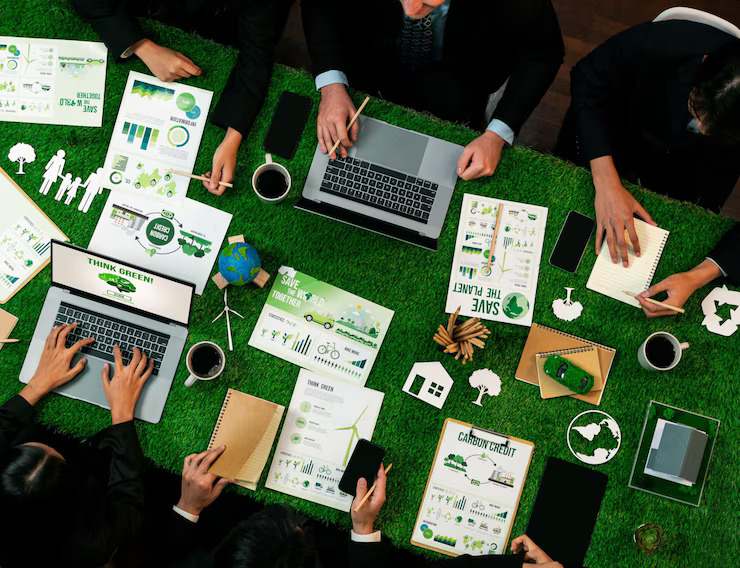
Case Study: Patagonia’s Commitment to Regenerative Agriculture
Patagonia’s commitment to regenerative agriculture is a prime example of the Rise of Regenerative Business. The business has made investments in agricultural methods that improve biodiversity, sequester carbon, and restore soil health. Patagonia guarantees that its supply chain helps restore the environment by assisting farmers who use these practices. This dedication goes beyond sourcing materials; Patagonia actively promotes a wider shift toward sustainable and regenerative methods by educating customers about the advantages of regenerative agriculture. Their strategy shows how companies may incorporate regenerative ideas into their core operations and have a beneficial effect.
Case Study: Interface Carpets and the Circular Economy 2.0
Interface Carpets is an example of how the Rise of Regenerative Business incorporates the circular economy 2.0. In order to reduce waste, employ recycled materials, and create goods that are both reusable and recyclable, the firm has redesigned its manufacturing procedures. Interface’s use of a circular economy 2.0 approach helps to restore natural systems while also lessening its environmental impact. Their efforts demonstrate how companies may make a difference by adopting regenerative design concepts and reconsidering product life cycles.
Transitioning to Regenerative Models: Strategies for Businesses
For companies aiming to join the Rise of Regenerative Business, the transition involves several strategic steps:
- Assessment: Evaluate current practices and identify areas for regenerative improvement.
- Stakeholder Engagement: Collaborate with employees, suppliers, and communities to align goals.
- Innovation: Develop products and services that contribute to ecosystem restoration and social well-being.
- Measurement: Implement metrics to track regenerative outcomes and positive impact.
- Education: Inform stakeholders about the benefits and practices of regenerative business.
By following these strategies, businesses can effectively transition from sustainability to regeneration, contributing to a more resilient and equitable future.
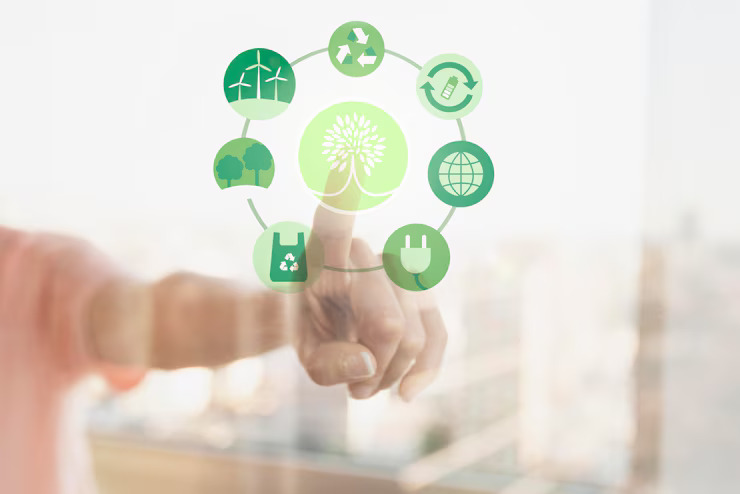
The Economic Benefits: ROI of Regenerative Practices
Embracing regenerative practices offers significant economic advantages. Companies participating in the Rise of Regenerative Business often experience:
- Cost Savings: Reduced resource consumption and waste lead to lower operational costs.
- Market Differentiation: Regenerative businesses appeal to environmentally conscious consumers, enhancing brand loyalty.
- Risk Mitigation: Restoring ecosystems and communities reduces exposure to environmental and social risks.
- Investment Opportunities: Investors are increasingly interested in companies demonstrating a positive impact and long-term viability.
These benefits underscore the financial viability of adopting regenerative models, reinforcing the business case for regeneration.
Traditional vs. Regenerative Business Models
| Aspect | Traditional Business Model | Regenerative Business Model |
|---|---|---|
| Environmental Impact | Minimization of harm | Restoration and enhancement |
| Resource Use | Linear consumption | Circular and regenerative |
| Stakeholder Focus | Shareholder-centric | Inclusive and equitable |
| Time Horizon | Short-term gains | Long-term resilience |
| Value Creation | Profit-driven | Multi-capital (social, environmental, financial) |
This comparison illustrates the fundamental differences between traditional and regenerative approaches, highlighting the transformative potential of the Rise of Regenerative Business.
FAQs About Regenerative Business
- What distinguishes regenerative business from sustainable business?
By actively repairing and improving ecosystems and communities rather than just minimizing harm, regenerative business goes beyond sustainability. - How does regenerative agriculture contribute to business success?
Regenerative agriculture boosts resilience and production by enhancing soil health and biodiversity, which results in long-term profitability. - What is circular economy 2.0?
The circular economy By incorporating regenerative concepts and emphasizing the restoration of natural systems and positive effect, 2.0 improves upon conventional circular models. - Can small businesses adopt regenerative practices?
Yes, by beginning with local projects, including communities, and progressively ramping up efforts, small enterprises may adopt regenerative methods. - What are the first steps toward becoming a regenerative business?
Assessing present effects, establishing regenerative objectives, involving stakeholders, and incorporating regenerative ideas into fundamental tactics should be your first steps.
With an emphasis on repair, resilience, and the production of comprehensive value, The Rise of Regenerative Business represents a watershed moment in corporate responsibility. Businesses may create a positive effect that benefits people, the environment, and profits by embracing circular economy 2.0 and regenerative agriculture. A route to sustainable prosperity is provided by the shift to regenerative models as the world community deals with growing environmental and social issues. Businesses that spearhead this change will not only ensure their own prosperity in the future, but they will also help create a prosperous, just world for future generations.





